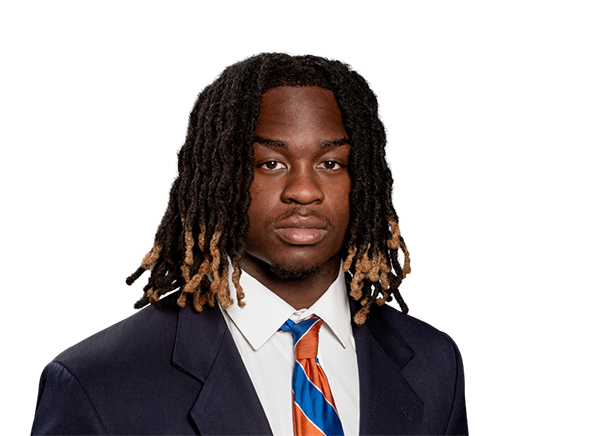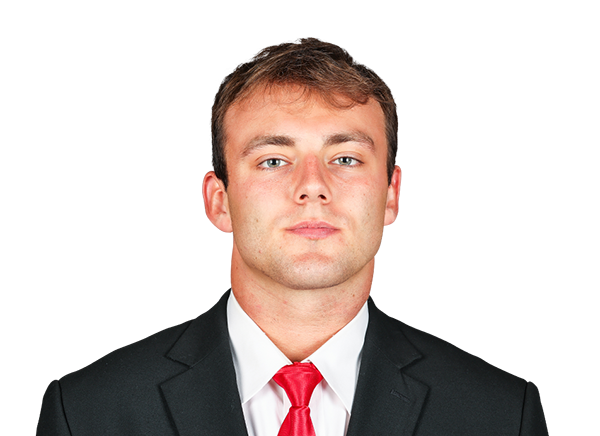Fantasy football is tricky to predict who will be an RB1 or not. Most times, thinking that high-power offenses or running backs who are designed to see increased volume touches are keen to be RB1 in fantasy. Even the other side of thinking, like avoiding RBs over 28 years old or poor offenses, there is no way a running back can be an RB1 in fantasy football. I’m here to break out many variables that can help us better understand what makes a running back an RB1 and how we can try to predict them for future seasons to come.
Does Age Make an Impact?
| Age Average | Lowest | Oldest | # Total Under 24 | # Total Over 27 |
| 25.2 | 22.1 | 29.6 | 3.8 | 1.8 |
Prime Age
Let’s start with age; as many fantasy owners or experts will say, this is a critical factor in determining an RB1 season in fantasy. In my research, I’m using data as of 2015 based on Fantasy Pros weekly season leaders regarding half-point PPR for fantasy. In my study, I’ve found some interesting numbers on how age can impact an RB1. Since 2015, the average age for an RB1 in fantasy football has been 25. That makes a ton of sense, as 25 is the tipping point in most running backs’ careers, so that follows fantasy too. We saw in 2022 as players like Josh Jacobs and Tony Pollard, who were both 25 years old, had truly fantastic fantasy seasons. If we look back at a few in prior years, like Joe Mixon’s elite season came at 25 years old, and Alvin Kamara, as the RB1, was also 25 years old.
Let’s look at some 24 to 26-year-old range players. Key players like Jonathan Taylor, Najee Harris, Travis Etienne, D’Andre Swift, Rhamondre Stevenson, and JK Dobbins are all close to hitting that mark, and could they be prime to breakout or bounce back candidates? Jacobs, Miles Sanders, and David Montgomery, who is just over the tipping point, could pull together one more elite season as they are all free agents heading into 2023. A backup running back like Tony Pollard, who finally got his shot at an increased workload, is still young enough to do it again, barring his current injury.
But can AJ Dillon, Khalil Hebert, Alexander Mattison, or Elijah Mitchell take a new step into getting to that status? Herbert has the best shot due to his position to be the starting running back in Chicago potentially. The average age has increased over the last few years. The 2022 and 2021 average age for an RB1 was 26 because of the 2017 draft class. We have a stretch of elite production due to the stack of the 2017 class who produced out of the gate in fantasy. Players like Elliott, Fournette, McCaffrey, and Kamara have headlined elite production coming into the NFL for fantasy football.
Young Generation
In terms of youth, the average young running back is 22 years old, making it an RB1 in fantasy over the last eight years. Over the years, we’ve seen the number of the younger running backs make it as an RB1 decrease. The previous two draft classes, like Breece Hall, Kenneth Walker, and Javonte Williams, have shown flashes of great talent but have yet to do it over a 17-game season. On average, four running backs under 24 years old make it to RB1 level status.
In 2022, there was no running back under 24 to make it as an RB1. The number is the lowest since 2019, and we’ve seen plenty of years where that number has been as high as five, six, and seven over the last eight seasons. Williams and Hall are coming off significant injuries, so who knows if they will get a full 17 games in 2023. Walker has the highest shot due to the team’s approach to running the ball often, and he’ll likely see a full workload.
Can young backs like Rachaad White, Brian Robinson, Tyler Allieger, James Cook, and Isaiah Pacheco take more significant steps in 2023? Does Cam Akers have a major bounce-back approach in 2023 as the lead guy in LA? It seems most times if you aren’t elite right away, the potential to be replaced is high, especially with a strong rookie class coming in. If anything, this may encourage your rookie drafting to take more shots at the running backs and hope this class is the next 2017 five year generation.
Old Generation
While we don’t like older running backs, they are also people! As I’ve mentioned, the 2017 class is considered old and washed. On average, for an RB1, two running backs over 27 are often RB1s in fantasy football. That numbers quietly fell over the years, as in 2015 and 2016, and eight running backs were combined over 27 as RB1s. Over the last six years, just six running backs over 27 finished with that elite status. It begs the question with the current group of running backs on their last legs.
Do Austin Ekeler, Derrick Henry, Nick Chubb, Dalvin Cook, and Mixon, all lead-backs, reach that status again? They can, as most of their production still looks top-notch, and none have a second option they will compete. It is worse for Derrick Henry as just one running back at 30 or older over the last three years has reached RB1 level status, but it’s Henry.
Years in the League
| Years Average | Shortest | Longest | Rookies | Over 7 Year |
| 3.8 | 1.3 | 8.0 | 1.6 | 0.7 |
Years in the league and age are close, as they are similar in some regard. The average amount of years in the league for an RB1 is four years of experience. As I said about age, the number of years has increased to five over the last two years. It’s also rare that an RB over seven years end up as an RB1, just like we mentioned about Henry’s age.
Let’s look at the number of years in the league differently. On average, usually, two rookies end up being RB1s in fantasy football over the last eight years. In the previous two seasons, just one rookie has been an RB1, Najee Harris, and none were an RB1 in 2022. This 2023 class, led by Bijan Robinson, shows promise that rookies can get back on track. Especially since many veteran running backs are free agents in 2023, and teams want that cheaper running back.
Let’s look at some of the rookie RBs from the 2022 class since many have potential jumps for Hall, Allgeier, White, and maybe Robinson. The number of rookies who failed to be an RB1 in year one and make it in year two are few in between. Just seven running backs have done that over the last eight years, with the most recent being Rhamandre Stevenson. The likelihood that all four will make a big jump is improbable.
Contracts
| Rookie Contract | Non-Rookie Contract | Contract Year? |
| 7.8 | 4.3 | 2.6 |
I also looked at contracts and whether a player’s contract impacts them being an RB1 in fantasy football. On average, eight RB1s are usually on their rookie deals still, which is a high number to make a good suggestion. Recently that number the last two years has been low as four and five, so we could see another downward trend in 2023 unless some younger veterans or even the 2023 rookie class show out.
There is the promise to regain that higher total again. As we’ve mentioned time and time again that the 2023 rookie running back class is very talented. Taylor’s class all have potential if they can get more work in their offenses and be the lead guy. Harris’ class is finally taking steps forward, and some lower-round players have the potential to be the main guy in their backfield, like Kenny Gainwell and Khalil Hebert. Of course, we’ve already mentioned the 2022 rookie class in their efforts to take a year two jump in fantasy football. That number will rise in 2023; the older backs are starting to break down, leading to the fall of the second-year contract players being RB1s.
Heading over to players in their non-rookie contracts, that average has always been four players. With the current talent in the NFL, that number has been seven and eight over the last two years. Those players in their second contract are getting older, so that number decreasing back to the average seems likely to me.
Another variable is players in a contract season, as many folks in the industry will tell you that a rookie in a contract or any player will show up because they want that next contract. On average, three running backs are usually in a contract year and want to get paid somehow. Over the last few seasons, that number has been a steady four players. It’s not all rookies, either. Sometimes players are in more minor contracts or even after their second contract.
Of course, the 2020 rookie class is in their contract year with the likes of Taylor, Dobbins, Swift, Akers, Dillion, and Antonio Gibson, so they could all be taken advantage of and see an increased workload. Harder to predict the one-year contract type of guys, but players coming to the end of their second contract, like Henry and Ekeler, are there too.
Draft Spot
| 1st | 2nd | 3rd | 4th | 5th | 6th | 7th | Undrafted |
| 4.1 | 2.6 | 2.3 | 0.9 | 0.9 | 0.1 | 0.1 | 1.0 |
Another area that I researched was where they were drafted in the NFL draft. On average, over 50% of the RB1 in fantasy were first, or second-round picks in the NFL draft. Running backs continue not to get first-round capital, it’s crucial who will go into the second round of the NFL draft. Guys like Hall and Walker were second-round picks with solid opportunities to be RB1s in fantasy.
The first-round pick RB1s over the last few years continue to be from the stacked 2017 draft class, but that rein will end soon. It will be interesting to see if the average RB1 comes down from the first two rounds. Let’s even bring the third round to the RB1 discussion, as that number increases to 75% of all RB1s in fantasy. The second and third rounds of drafted running backs will be significant.
That number is minimal in the later rounds, from fourth to undrafted. On average, just 25% of RB1s come from there. In the fourth round, the number of RB1s has been few to none, but in 2022 we had three running backs, Rhamondre Stevenson, Pollard, and Jamaal Williams, finished high. In the fifth round, there has also consistently been one running back as an RB1, but we need to thank Aaron Jones mainly for that.
Rounds sixth and seventh don’t average one RB1. There have just been two running back over the eight years in, Chris Carson and Latavius Murray, who had both done it once. The likelihood that a running back will do it is slim to none, so a guy like Pacheco’s chances seems slim. It’s most likely an undrafted running back would have a better shot at reaching RB1 status. Ekeler has been the poster boy recently of an undrafted running back who has been elite. Four other backs have done it in the last eight years but have yet to reach it again. It will be interesting to see draft spot changes with NFL teams no longer taking running backs early.
Team Ranks
Now let’s look at the total offense and defense performance and if that affects an RB 1. Suppose we look at the offensive side of the ball first. Many believe that good offenses produce top-tier running backs for fantasy football. On average, about half the top 12 running backs are in the top 10 offenses. If we can predict which offenses will be elite, then we can know better which RBs will be an RB1 in fantasy football.
Surprisingly enough, in the last eight years, there have been three times that the number one offense did not produce an RB1, 2022, 2020, and 2017. Kansas City and the New England Patriots have proven they don’t need an elite running back to be an elite offense. The bottom ten offenses still can produce RB1s in fantasy football as, on average, at least two teams will have one. This usually happens when a running back is the center of an offense for a team. In 2022, Henry and Stevenson were the focus points of their offenses, so getting the opportunity was big for them. Predicting which bottom team will succeed is easier to determine if we know of an elite option like Henry.
On the defensive side, sometimes strong defense usually means more work for the running backs, and inadequate defense means the running back usage is likely lower. On average, three running backs were on a team with a top-10 defense. That wasn’t as true in 2022 as just one running back in the top 12 was on a top 10 defensive team. The standard theory is that tough defense and strong run games sometimes produce RB1s. It was more than the bottom ten defenses, averaging four RB1s per season. If the running backs are unique, like some guys like Barkley, Cook, and Jacobs, it doesn’t matter because they will see their opportunities when needed. Another fun stat is that, on average, two RB1s were on a team with a top-10 offense and defense, and one RB1 was on a team with a bottom-ten offense and defense.
Stats
Here are the average stats for an RB1 in fantasy football over the last eight seasons. I also broke it down between the top elite and the low-end RB1s.
| Average RB1 | Carries | Yards | Receptions | Touchdowns |
| 240 | 1093 | 51 | 12 | |
| Elite RB 1 | Carries | Yards | Receptions | Touchdowns |
| 257 | 1199 | 59 | 14 | |
| Low-End RB 1 | Carries | Yards | Receptions | Touchdowns |
| 222 | 987 | 44 | 9 |
Conclusion
In conclusion, we may only partially guess the top 12 RB1s in a given year, but we can get close. The best thing is to look for running backs in the 24 to 26 age range who are at the prime of their career. Running backs in rookie contracts have a slightly better shot at produce while young. Given the first three-round capital in the NFL, running backs will get shots at a more significant workload and lead to production. Buy into rookies coming from the 2023 draft class, as they will be a special one. Ensure they are involved in the passing game and likely to see over 200 carries. Of course, make sure they get used in the Red Zone often as well. Here are my top 12 predictions for 2023, and the order doesn’t matter.
- Christian McCaffrey
- Rookie RB
- Rookie RB
- Jonathan Taylor
- Austin Ekeler
- Kenneth Walker
- D’Andre Swift
- Saquon Barkley
- Khalil Hebert
- Travis Etienne
- Josh Jacob
- Derrick Henry
Make sure you subscribe to the #NerdHerd, where you get exclusive content, dynasty/rookie/devy rankings, buy/sell tool, and a bonus podcast too. Dynasty Nerds also recently launched the #DynastyGM tool, a complete game-changer in the fantasy industry. Click here for a free trial. We truly are your one-stop shop for all your fantasy football needs!

















